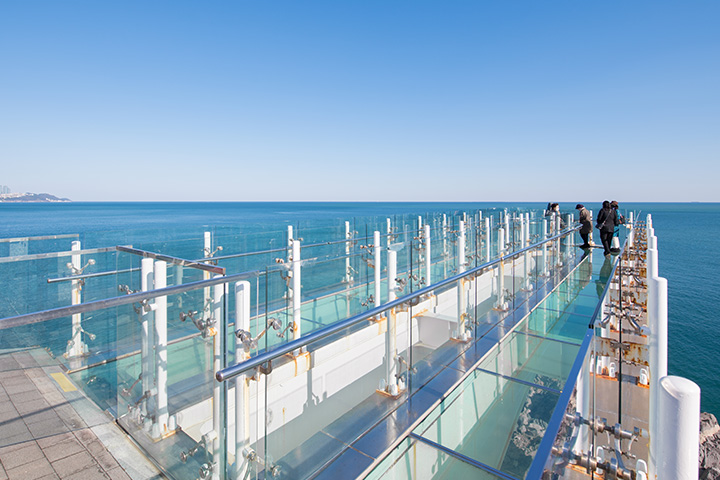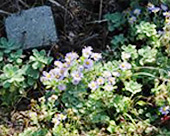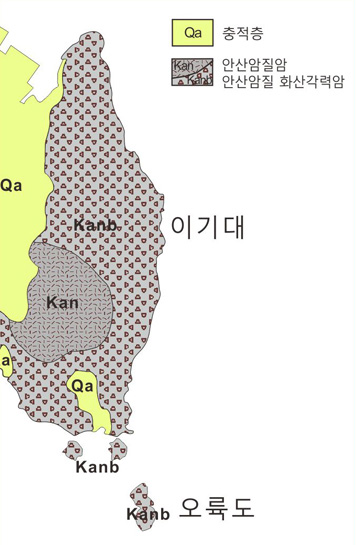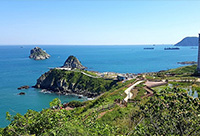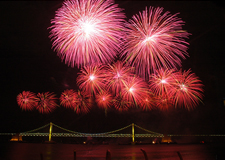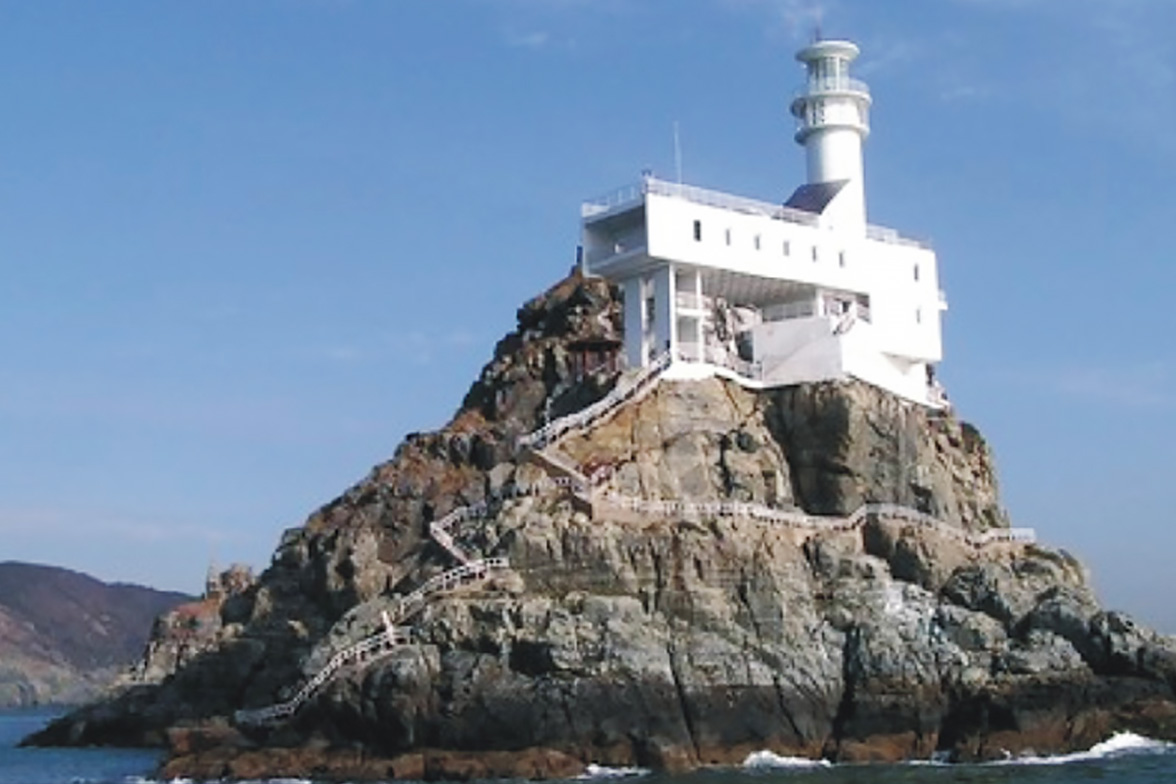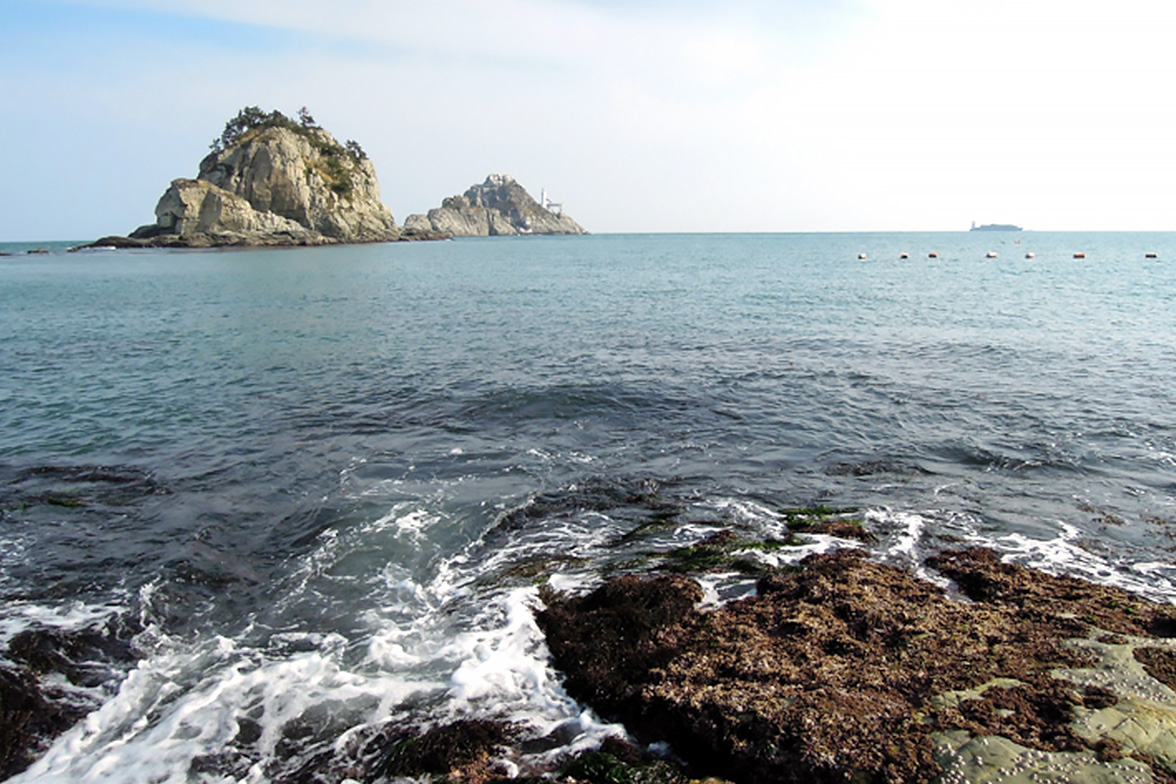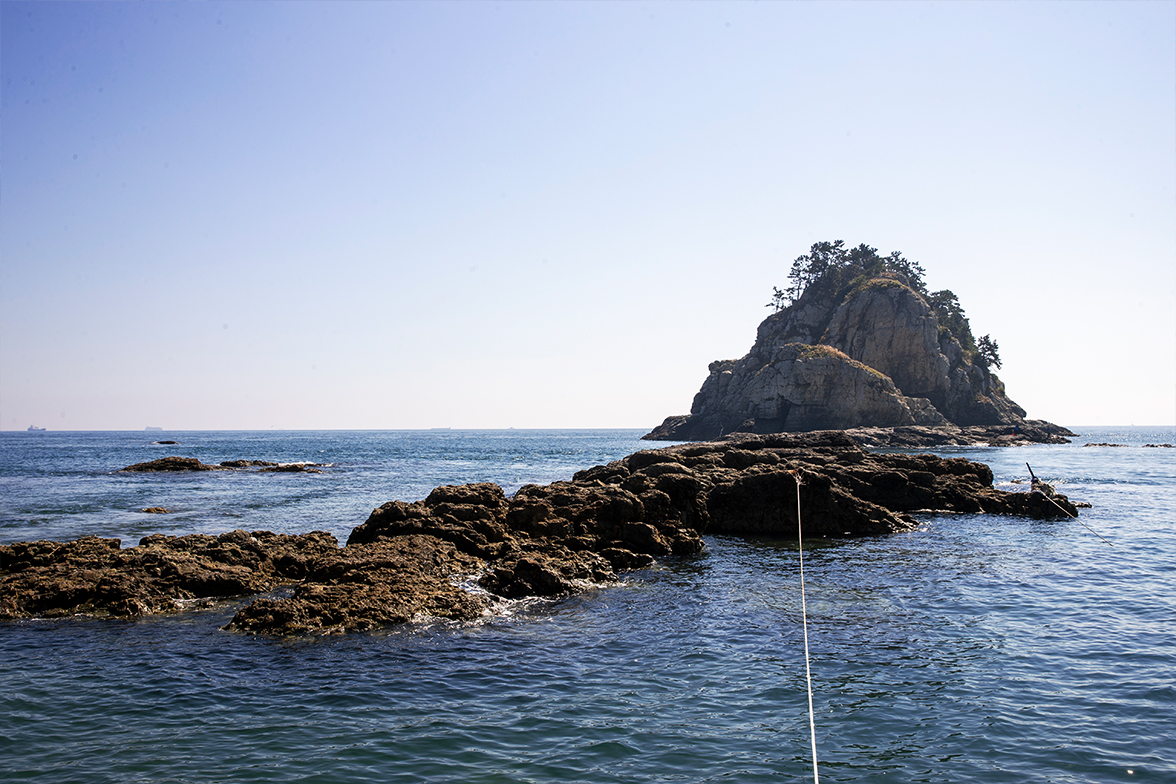Vulcan facing the sea
With the terrain of precipitous sea cliffs, wave-cut terraces and sea caves on each island, animals and plants grow freely in harmony with the deep blue sea - a magnificent sight. It is assumed that the Oryukdo Islands, comprising the same volcanic rocks as the Igidae geological attraction, were once a small peninsula connected to the land, until 120,000 years ago when they were separated by erosion from the pounding waves.
Origin of its name
The rocky “Oryukdo” islands, guard the gateway to Busan Port. Their name is attributed to the fact that the five islands huddled together look like five or six depending on the tide. When the middle part of Usakdo (Bangpaeseom and Solseom), the closest to land of the five, fills with water, the islands become six, and when the water subsides, they become five again. Hence the name.
However, this explanation sounds like a modern empirical interpretation. According to the 『Records of Dongnae-bu(1740)』, “The reason why the islands look like five or six is one island among them is only visible depending on viewing position.”
Further, there are many places with dragon-related legends, including Yongho, Yongyeon, Yongdang and Yongdu-chon (village) corresponding to Yongju-myeon in the late Joseon Dynasty period. The white horse in the legend of a Taoist immortal on a white horse ascending into heaven on Sinseondae Cliff was in fact a dragon horse ascending to heaven. Therefore, the mountain of Sinseondae Cliff is called Yongmasan Mountain and the mountain where Dongmyeongburwon Temple is located, in Yongdang-dong, is called Yongbisan Mountain.

